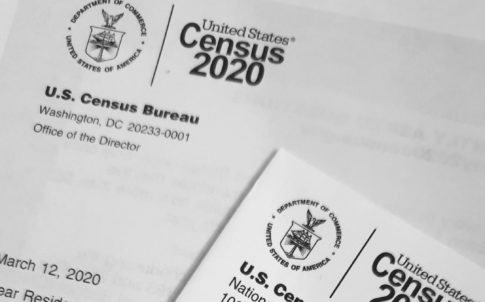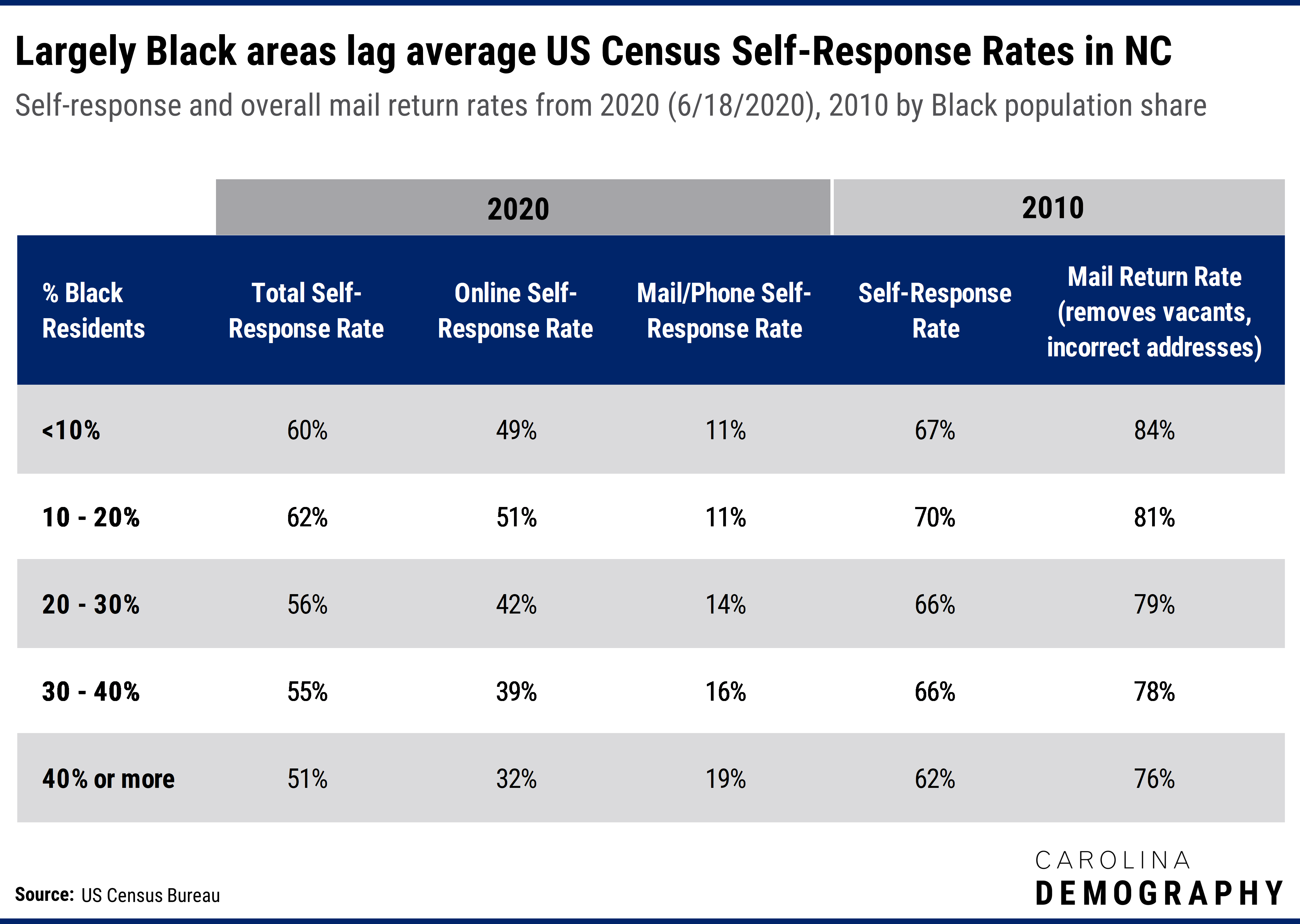Getting everyone counted in the 2020 Census

A complete and accurate census count is incredibly important. The census shapes how billions of dollars in federal funding are distributed (including $43.8 billion to North Carolina), how political seats are apportioned, and how communities plan for their future residents.
Historically, certain populations have been undercounted in the census, due to a variety of factors. In 2010, the Census Bureau estimated the census missed about 2.1% of the Black population nationwide. For young children, the undercount was worse: estimates suggest the 2010 Census missed 6.3% of Black children under 5. Undercounting these communities skews census data that’s used to ensure fair political representation and support critical services such as schools, parks, and healthcare facilities.
As of June 18, an estimated 57.8% of NC households had self-responded to the 2020 Census. Census tracts in NC containing 40% or more Black residents had a Census self-response rate of 6.7 percentage points lower than the state average.
This table shows the 2020 Self-Response Rate, as of June 18, by Black population share. You can also see historical self-response and overall mail return rates from 2010.

The self-response gap in census tracts with larger Black populations is largely driven by lower online response rates: census tracts with 20% or more black residents are more likely to respond to the census by mail/phone than the statewide average (12.7%).
We have also mapped the intersection of tracts that are in the bottom 20% for response rates that contain 40% or more Black residents, as of June 1. Clusters of low response rates appear in the Northeast, Sandhills, and Southwest Prosperity Zones in NC.

Every household that doesn’t fill out the census form online, by mail, or by phone—known as “self-response”—enters the Census Bureau’s non-response follow-up (NRFU) universe. During NRFU, the Census Bureau sends trained enumerators door-to-door to collect census responses directly. In a previous blog post, we document how individuals living in the lowest-responding tracts are increasingly likely to be minority residents.
Increasing response rates across North Carolina is critical in the next few months. As the CUNY Graduate Center notes, “The NRFU door-knocking operation is challenging, expensive, and adds substantially to the risk that people will be missed or counted inaccurately.” When certain groups are more likely to be undercounted, their communities are at risk of having lower-quality data and less than their fair share of political representation and funding for the next decade.
The results of the 2020 Census informs decisions about the allocation of hundreds of billions of dollars each year to communities across the country. NC’s Office of Budget and Management has calculated that as a state, NC could lose over $417 Million per year based on the May 31, 2020 response rate.
My Black Counts NC has created a toolkit with suggested social media copy for elevating the importance of filling out the 2020 Census online. The national organization Census Counts has also released an online toolkit with social media and messaging. Among their suggestions:
Need help understanding population change and its impacts on your community or business? Carolina Demography offers demographic research tailored to your needs.
Contact us today for a free initial consultation.
Contact UsCategories: Census 2020

The Center for Women’s Health Research (CWHR) at the University of North Carolina School of Medicine released the 12th edition of our North Carolina Women’s Health Report Card on May 9, 2022. This document is a progress report on the…

Dr. Krista Perreira is a health economist who studies disparities in health, education, and economic well-being. In collaboration with the Urban Institute, she recently co-led a study funded by the Kate B. Reynolds Foundation to study barriers to access to…

Our material helped the NC Local News Lab Fund better understand and then prioritize their funding to better serve existing and future grant recipients in North Carolina. The North Carolina Local News Lab Fund was established in 2017 to strengthen…
Your support is critical to our mission of measuring, understanding, and predicting population change and its impact. Donate to Carolina Demography today.